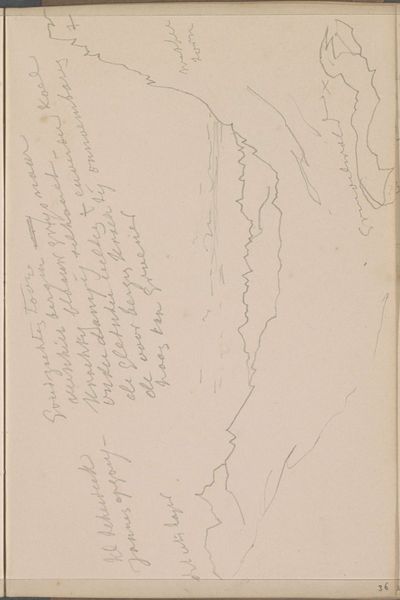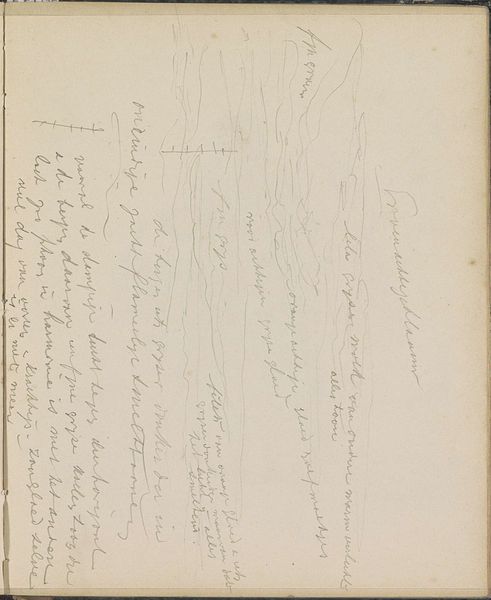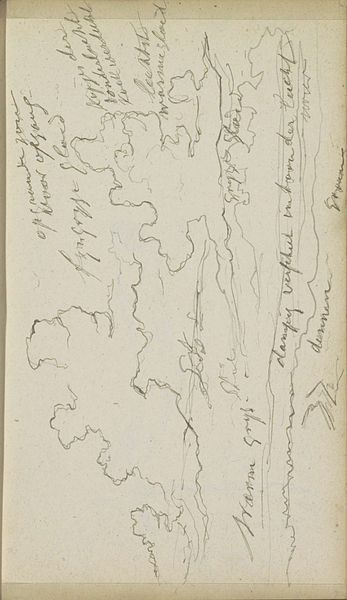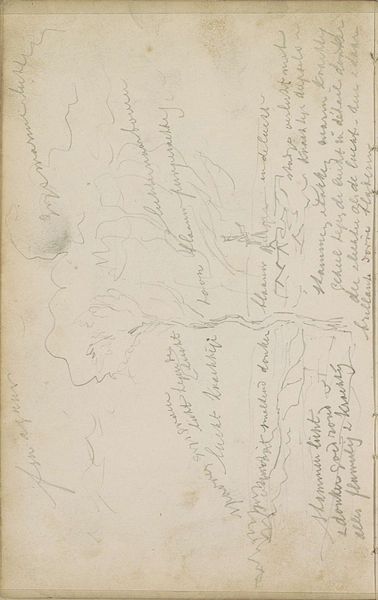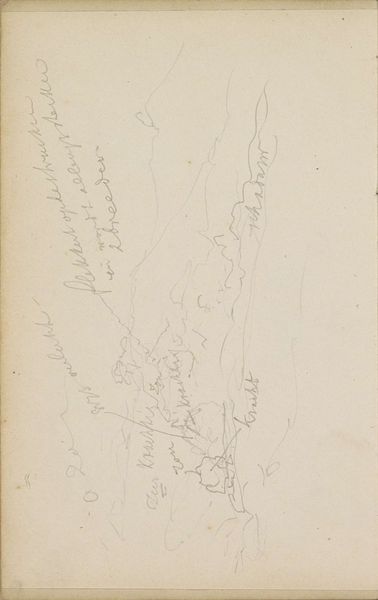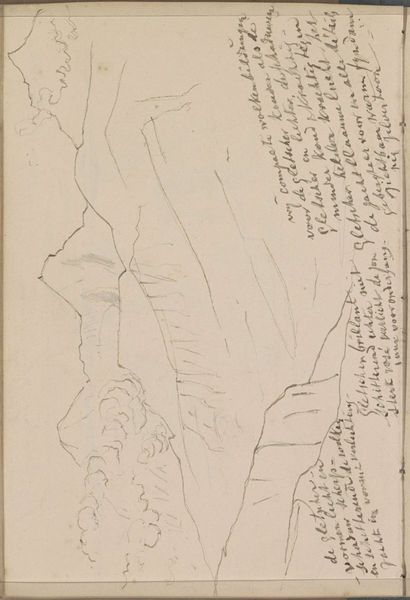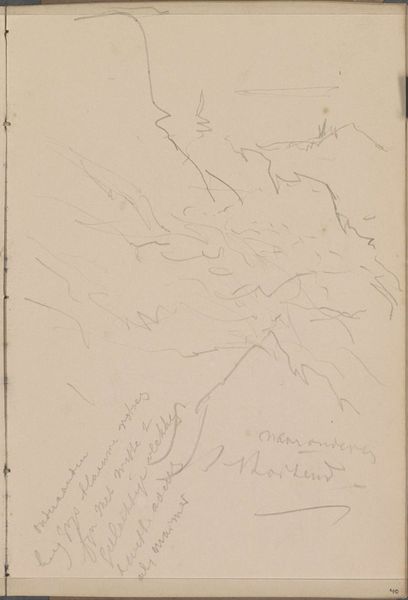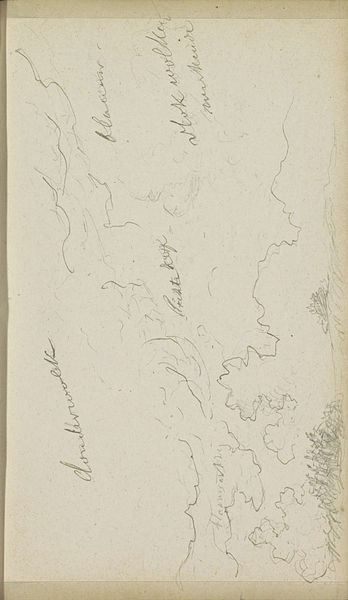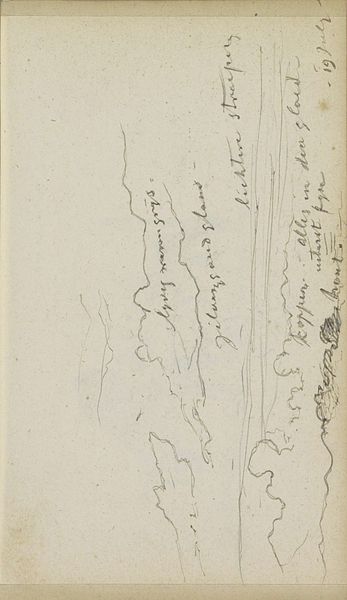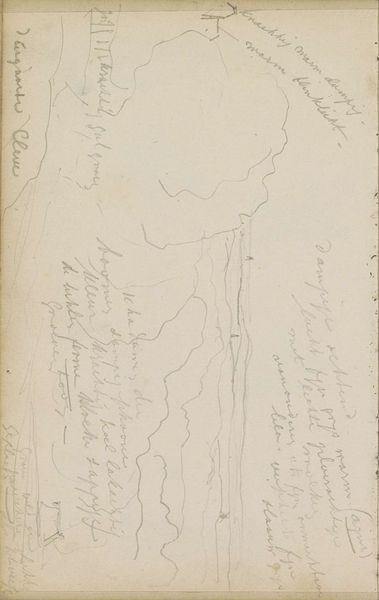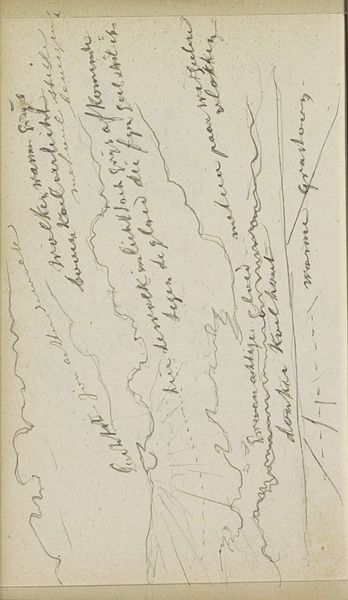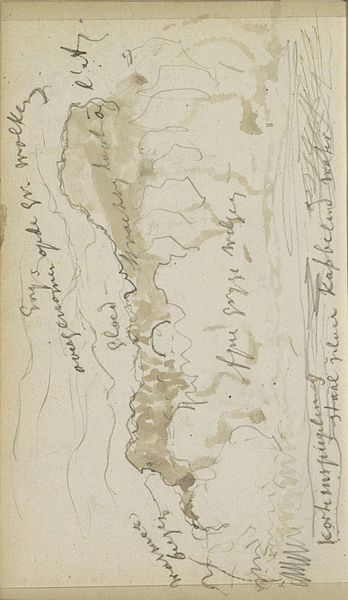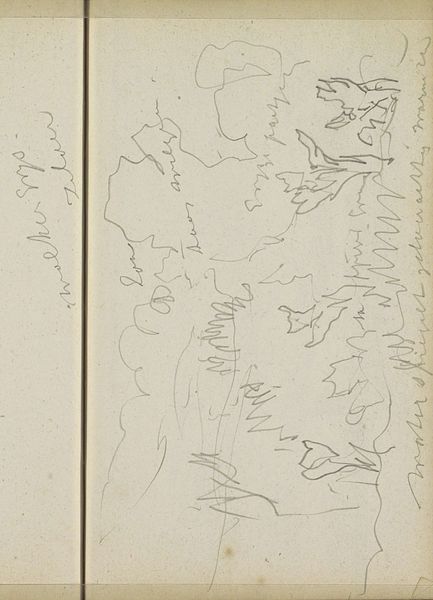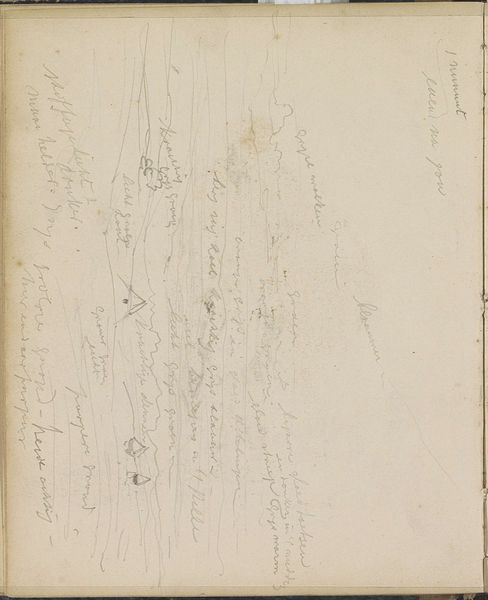
Copyright: Rijks Museum: Open Domain
Johannes Tavenraat made this sketch of a waterfall in Schaffhausen, likely in the mid-19th century, using graphite on paper. This work captures the raw power of nature, something that resonated with the changing cultural values in Europe at the time. We can see the influence of Romanticism, a movement that placed great emphasis on emotion and individual experience. The focus on a sublime natural landscape, like a powerful waterfall, contrasts with the burgeoning industrialization of the time. Artists like Tavenraat were drawn to nature as a source of spiritual and aesthetic experience, removed from the growing urban centers and factories. In the Netherlands, where Tavenraat was from, the art academies were also starting to focus more on landscape painting, which also shows a growing interest in nature. Understanding this sketch means looking at more than just the image itself; it means studying the cultural shifts and the institutional support that made this kind of art possible. This is where art historians contribute to understanding the work. We look at things like exhibition records, artists' letters, and critical reviews to better grasp what this image meant to people in its own time.
Comments
No comments
Be the first to comment and join the conversation on the ultimate creative platform.
